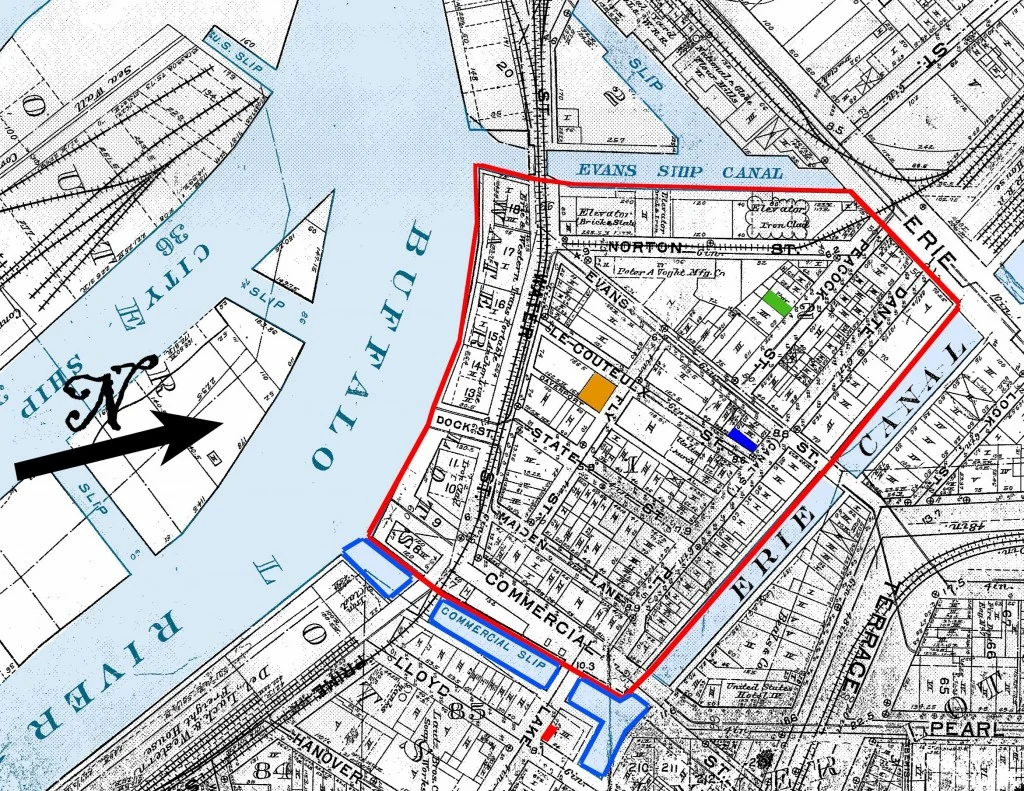Erie Canal Bufallo : Wiki Commons
For several years, teams of University at Buffalo archaeologists from the Buffalo Archaeological Survey have conducted digs in downtown Buffalo along what was the Erie Canal. The artifacts they’ve found, when considered together, help describe how Buffalonians lived and worked from the early 1800s onward.
This summer, they’re conducting a “public outreach dig” under the Skyway and invite the community to come down on Aug. 18 and 22, from 9 a.m. to 4 p.m., to visit the dig site, observe its operation and speak with the archaeologists and historians working there.
The site is bounded by Main Street and Hanover Street, east of the Skyway Pier. Hanover Street runs between Marine Drive and Prime Street.
The project manager, historian Nathan Montague, is a research support technician in the UB Department of Anthropology, which houses the survey. He is directing the dig as part of the Erie Canal Harbor Development Corp.’s Canalside Visitor Experience program.

Its mission is not only to excavate the area, but to educate the public about the canal and canal life, generate interest in the canal excavation and restoration work, and help people understand the work of archaeologists in general.
“We’re in the early stages of excavating this dig site,” he says, ” but previous digs we’ve conducted nearby have uncovered pipe stems and other personal items, dinner plates, commercial objects, a lot of brick and mortar, coal dust and ash, and something that could be a cannonball or part of a ship’s ballast. We will probably find similar items and even may find a few surprises.”
During much of the 19th and 20th centuries, Buffalo was a major international industrial and grain transport city, largely because of its waterfront and the Erie Canal, which cut a swath through what are now downtown streets.
“The canal was right downtown, so there was a great deal of commercial activity along this stretch of the waterfront for the better part of two centuries,” Montague says.
The canal’s main body, plus its many slips and adjuncts, covered a lot of territory. It ran southwest parallel to the harbor and ended at the Commercial (Street) Slip, where it met Lake Erie and the Buffalo River. Most of the harbor section of the canal was filled in by the 1920s, which is why we don’t “remember” where it was.
“So this spot now looks like an abandoned field,” Montague says, “but four- and five-story brick buildings once covered the entire block of land on which we are digging.
“The lower floors of those buildings typically housed businesses like warehouses, wholesale groceries, taverns, insurance companies and hardware stores, while upper floors were used for lodging or storage. Most of the buildings likely were erected in the 1830s and the last ones weren’t torn down until the early 1970s,” he explains.
“Artifacts from the site will tell us the stories of the people who lived and worked here when the Canalside neighborhood was the center of Buffalo’s — and the nation’s — economy,” he says.
He says the dig offers the public has a unique opportunity to get a sense of the layout of this area and how it has changed dramatically over the past century, and to see how urban archaeology is conducted and what it has to teach us.
The Archaeological Survey is a not-for-profit research, contracting and applied archaeology institution within the UB Department of Anthropology. It has been engaged in cultural resource management projects for more than 30 years. The institution manages artifact collections and information about historic and prehistoric archaeological sites and buildings in Western New York.






